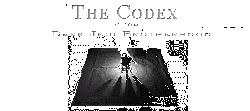
Dark Brotherhood Infrastructure
Dark Jedi of the Brotherhood
Rights of the Brethren
Lore
|
Orders of the Brotherhood
History
Until more recent times, a member within the Dark Jedi Brotherhood would associate themselves with an Order. These three orders provided students of the Dark Side with three different paths in which to accumulate personal power. Each of the Orders had its own manner of operations, along with associated strengths and weaknesses that drew students to them. Originally, the three Orders on the Tripartite Path were the manipulative and subtle Krath, the ruthless warriors of the Obelisk and the cunning, domination focused Sith.
The Brotherhood operated under these three orders for many years, with each of the orders challenging each other for dominance but always serving the Dark Side first and foremost. This all changed after the events on New Tython. Under the leadership of Grand Master Muz Ashen, Dark Jedi Brotherhood forces waged a war against a newly discovered group of Jedi on the planet. After much blood was spilled the conflict finally ended with the Jedi becoming part of the Brotherhood. This required a change to the organization.
The followers of the Light Side brought with them a mirror of the Tripartite Path. A Jedi could become a peaceful Consular focused on learning, a highly trained Guardian that focused on defensive combat or a skilled Sentinel that augmented their abilities with stealth and technology.
Following the abolishment of the Krath and Obelisk Orders under the rule of Darth Pravus, the Orders saw a change again. All members of the Jedi Order were joined beneath one Order, being balanced against the Sith and Gray Orders. Non-Force users were brought into one of two orders, Mercenary or Loyalist Orders. This would see change again under Grand Master Cantor, with the Gray and Dark Jedi Orders being brought under a single umbrella: the Force Disciple order.
Orders
A member’s order is akin to a chosen professional course. The first determining factor as to which orders are available to members are whether or not they have the ability to use the Force. Those who can wield the Force and those that cannot (Non-Force Users) will have different Orders available to them.
A Non-Force user is able to select from the Orders of Loyalist and Mercenary. A Loyalist has pledged their service and support to a branch of their unit’s military as a professional soldier. In stark contrast, the Mercenary’s services are sold to the highest bidder and are not generally part of the “official” command structure of a unit. These Orders carry a wide range of options for development. You could be the Bounty Hunter with a gruff exterior and a heart of gold as a Mercenary or you could be the cruel taskmaster pushing their troops to the brink and beyond as a Loyalist, or many options in-between.
Orders available to Force Users are: Jedi Order, Sith Order, and the Force Disciple Order. The Force Disciple Order is less ideologically bound than the more traditional Jedi or Sith. For example, a Force Disciple could primarily use the light side of the Force but eschew the strict rules of the Jedi Order. The Jedi Order and Sith Order more closely align with their historical counterparts along with the rich histories and philosophical legacies of those organizations. Orders give members opportunity for more complex character development.
Alignment & The Force
In the Brotherhood’s Character Sheet System, Force powers are considered neutral and are not tied to any particular Order. This means that a Dark Jedi can use Healing and a Light Jedi can use Force Lightning. This is done for logistics reasons. For more information see the CS Guide: Force Powers article.
Traditions
For those members who have reached the rank of Equite, it is possible to declare further adherence beyond Orders. Some traditions are chosen and made available based on Order, while others are available to all members. These act more like ideological or organizational familiarity. It is important to note that while traditions are available to further refine characters for others, it is not a requirement for membership. This feature functions as a value add in outlining a character for others at a glance and in no way limits those who do not partake in the available options. For more information see the Traditions page for details on the currently available Traditions.